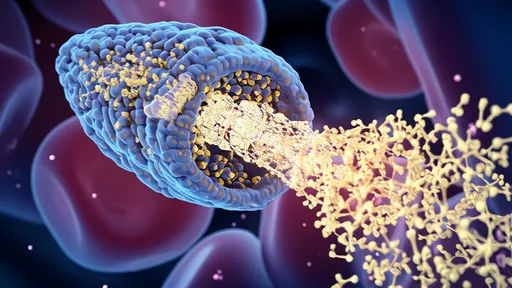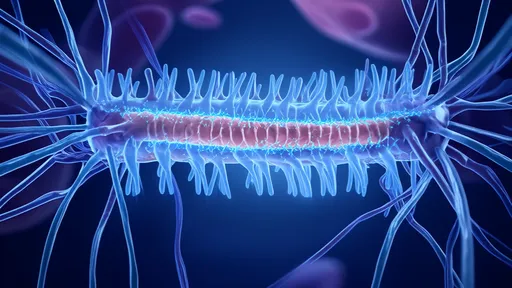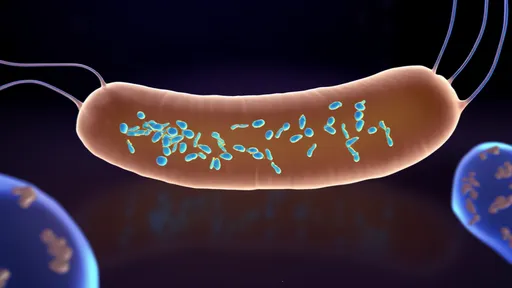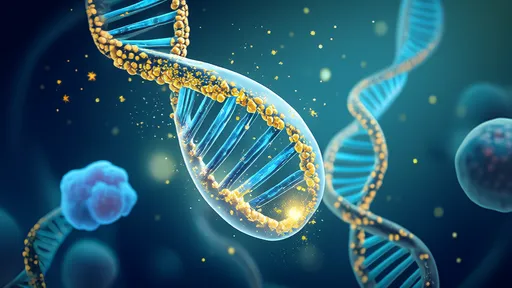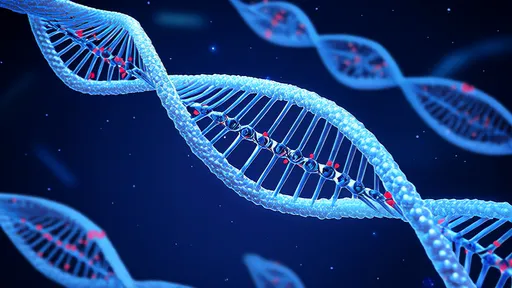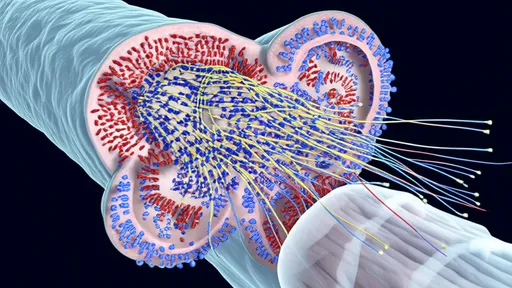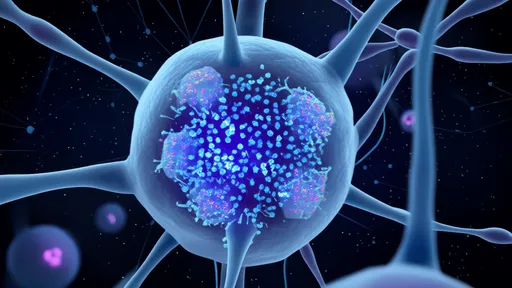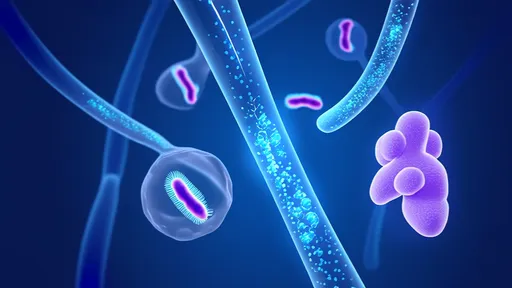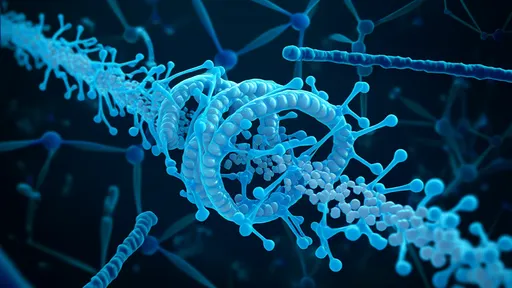In a groundbreaking development that challenges our understanding of aging, scientists have demonstrated the potential to reverse cellular aging through a technique called transient reprogramming. This approach temporarily rewinds the epigenetic "clock" of cells without erasing their identity, opening new possibilities for regenerative medicine and age-related disease treatment.
The concept of cellular reprogramming isn't entirely new. In 2012, Shinya Yamanaka won the Nobel Prize for discovering that mature cells could be transformed back into pluripotent stem cells using four specific transcription factors (Oct4, Sox2, Klf4, and c-Myc), now known as Yamanaka factors. However, the complete reprogramming of cells into stem cells wasn't the goal for aging research - scientists sought a more nuanced approach that could rejuvenate cells while maintaining their specialized functions.
What makes transient reprogramming different is its carefully calibrated application of these factors. Instead of fully converting cells back to stem cells, researchers apply the Yamanaka factors for just a short duration - typically 13 days in human cells. This brief exposure appears to reset epigenetic markers associated with aging while allowing cells to retain their original identity and function. The implications are profound: early experiments show this method can reduce biological age markers by 30 years in human skin cells.
The science behind this rejuvenation centers on epigenetics - the chemical modifications that sit atop our DNA and regulate gene expression without altering the genetic code itself. As we age, our cells accumulate specific epigenetic patterns that researchers can read like a molecular clock. This epigenetic clock, first developed by Steve Horvath in 2013, has become the gold standard for measuring biological aging. Transient reprogramming appears to reset this clock by removing accumulated methylation patterns that develop with age.
Recent studies have shown remarkable results across multiple cell types. In one experiment, researchers applied transient reprogramming to cartilage cells from osteoarthritis patients. Not only did the cells show younger epigenetic markers, but they also demonstrated improved function, producing more collagen and showing reduced inflammatory markers. Similar success has been seen with muscle stem cells, which showed improved regenerative capacity after treatment.
Perhaps most exciting are the results from animal studies. When researchers applied this technique to mice with premature aging disorders, they observed extended lifespan and improved organ function. Even in normal aged mice, transient reprogramming improved heart and liver function and accelerated wound healing. These findings suggest the potential for whole-body rejuvenation, not just cellular-level changes.
The safety profile of transient reprogramming appears promising. A major concern with cellular reprogramming has always been the risk of cancer - after all, many of the same pathways that maintain stem cells are involved in tumor formation. However, because the process is temporary and doesn't fully dedifferentiate cells, early evidence suggests it may avoid this pitfall. Researchers have not observed tumor formation in animal models treated with transient reprogramming protocols.
Several biotech companies have already begun translating these laboratory findings into potential therapies. One approach involves extracting a patient's cells, rejuvenating them through transient reprogramming, and then reinfusing them. Another more ambitious strategy aims to develop drugs that can trigger similar epigenetic resetting directly in the body. While human trials are still in early stages, the first applications will likely target specific age-related conditions like osteoarthritis or muscle wasting before potentially expanding to broader anti-aging applications.
Ethical considerations accompany this exciting science. Some researchers caution that we still don't fully understand the long-term consequences of epigenetic reprogramming. Others warn against premature commercialization of unproven "anti-aging" therapies. However, the scientific consensus is that transient reprogramming represents one of the most promising avenues yet discovered for addressing the fundamental processes of aging.
The implications extend beyond medicine. If we can safely reset cellular aging, it could transform how we think about human healthspan and longevity. Diseases we currently consider inevitable consequences of aging might become preventable or treatable. The socioeconomic impacts could be profound, from retirement ages to healthcare systems designed around treating chronic age-related conditions.
As research progresses, scientists are working to refine the technique - determining optimal durations for factor expression, developing more precise delivery methods, and identifying which cell types respond best. Some researchers are exploring whether certain Yamanaka factors might be more important than others for rejuvenation effects, potentially allowing for simplified cocktails with fewer components.
The next frontier involves understanding how these epigenetic changes translate to tissue and organ function. While resetting the molecular clock is impressive, the ultimate test is whether this leads to meaningful improvements in health and function. Early results suggest it does, but comprehensive studies in whole organisms are still underway. Researchers are particularly interested in whether transient reprogramming can clear senescent cells - the "zombie" cells that accumulate with age and contribute to tissue dysfunction.
What makes this approach unique in the field of longevity research is that it doesn't just slow aging - it appears to actively reverse certain aspects of it. Most anti-aging interventions to date, from calorie restriction to rapamycin, work by slowing the accumulation of damage. Transient reprogramming suggests we might be able to turn back the clock on some of that damage after it has occurred.
The coming years will be critical for this technology as it moves from laboratory studies to clinical applications. Regulatory pathways for aging interventions remain undefined, and the scientific community continues to debate the best biomarkers to assess biological age in clinical trials. Nevertheless, transient reprogramming stands as one of the most promising developments in the quest to understand and potentially control human aging.
For decades, the blood-brain barrier (BBB) has stood as a formidable gatekeeper, selectively shielding the brain from harmful substances while frustrating efforts to deliver life-saving therapeutics. This biological fortress, while essential for protecting our most vital organ, has rendered many promising treatments for neurological disorders ineffective. Now, a groundbreaking approach combining protein engineering and artificial intelligence is cracking the code to safe BBB penetration, potentially revolutionizing treatment for Alzheimer's, Parkinson's, and brain cancers.
In a groundbreaking development that could revolutionize the treatment of spinal cord injuries, researchers have successfully engineered hydrogel-based optical fibers capable of mimicking neural pathways. These "neural optical fibers" represent a fusion of advanced materials science and neurobiology, offering new hope for patients with previously untreatable damage to their central nervous system.
In a groundbreaking discovery that could revolutionize our approach to plastic waste, scientists have identified a surprising ally in the fight against polyethylene pollution: the humble wax worm. More specifically, the bacteria residing in the gut of these caterpillar-like creatures have demonstrated an extraordinary ability to break down one of the world's most stubborn plastics. This finding opens new avenues for tackling the global plastic crisis through biological means.
In a groundbreaking development that challenges our understanding of aging, scientists have demonstrated the potential to reverse cellular aging through a technique called transient reprogramming. This approach temporarily rewinds the epigenetic "clock" of cells without erasing their identity, opening new possibilities for regenerative medicine and age-related disease treatment.
In a groundbreaking leap for precision medicine, researchers have unveiled a light-controlled CRISPR delivery system using DNA-origami "nanodrones" – a fusion of nanotechnology and gene editing that promises unprecedented control over therapeutic targeting. This innovation, emerging from a collaboration between bioengineers and geneticists, reimagines drug delivery by combining the programmability of DNA nanostructures with the spatial precision of optogenetics.
In a groundbreaking study that could reshape our understanding of consciousness, neuroscientists have identified the thalamic reticular nucleus (TRN) as a potential "rhythmic switch" governing wakefulness through gamma wave modulation. This almond-shaped inhibitory structure, often described as the brain's gatekeeper, appears to orchestrate states of awareness by tuning neural oscillations like a conductor leading a symphony of consciousness.
For decades, chronic pain has remained one of medicine's most elusive challenges – a complex interplay of biological, psychological, and social factors that often defies conventional treatment. Now, groundbreaking research into the spinal cord's neural "fingerprints" of pain is revolutionizing our understanding of how persistent pain becomes etched into the nervous system. Scientists are mapping specialized neural circuits that appear to encode chronic pain with remarkable specificity, opening new avenues for targeted therapies.
In a groundbreaking discovery that reshapes our understanding of brain metabolism, researchers have identified glial cells as the unsung architects of neuronal energy distribution. The study reveals how these long-overlooked support cells orchestrate the precise mitochondrial allocation to neurons, challenging the neuron-centric dogma of neuroscience. This paradigm shift underscores glial cells' role as metabolic conductors in the symphony of brain function.
Scientists have uncovered a startling new pathway by which gut microbes communicate with the brain at lightning speed. Dubbed the "10-second gut-brain superhighway," this discovery centers on the vagus nerve's ability to transmit microbial signals faster than previously thought possible. The findings could revolutionize our understanding of conditions ranging from depression to irritable bowel syndrome.
In a groundbreaking discovery that bridges molecular biology and neuroscience, researchers have uncovered how the CPEB protein acts as a "molecular glue" to solidify long-term memories through an elegant phase transition mechanism. This finding not only revolutionizes our understanding of memory persistence but also reveals nature's ingenious solution to maintaining information at the molecular level.
In a groundbreaking discovery that blurs the line between botany and acoustics, researchers have uncovered evidence of tomatoes employing ultrasonic warfare against herbivorous insects. The study, published in Nature Plants, reveals how tomato plants emit high-frequency sounds when under attack - not as passive victims, but as active participants in their own defense.
In the dense rainforests of Central and South America, leafcutter ants have perfected an architectural marvel that puts human climate control systems to shame. These tiny engineers construct elaborate underground nests spanning hundreds of square feet, maintaining near-perfect temperature and humidity levels year-round – without using a single watt of electricity. As architects and engineers grapple with the urgent need to reduce building emissions, these insect-built structures offer profound lessons in passive climate regulation.
The depths of the ocean hold secrets that continue to astonish scientists, and among the most enigmatic phenomena is the "whale fall"—the carcass of a deceased whale sinking to the seabed. These massive organic deposits create transient ecosystems, supporting diverse marine life for decades. But beyond the visible scavengers and bone-eating worms, a hidden microbial world thrives, and within it, something extraordinary has been discovered: colossal bacteriophages, viruses that prey on bacteria, with genomes so large they defy conventional understanding.
In a groundbreaking discovery that could revolutionize coral reef monitoring, scientists have identified a natural early warning system for coral bleaching events. Certain coral species exhibit vivid fluorescent patterns when under thermal stress, acting as biological "sentry lights" that signal the onset of bleaching before visible damage occurs. This phenomenon, observed in reef-building corals across the Indo-Pacific, represents nature's own climate change alert system.
In a groundbreaking development for ecological research and climate science, researchers have harnessed advanced LiDAR technology to map the photosynthetic efficiency of trees across vast forested areas. Dubbed the "carbon pulse" of forests, this innovative approach provides unprecedented insights into how trees absorb and process carbon dioxide at an ecosystem scale. The implications for understanding carbon sequestration, forest health monitoring, and climate change mitigation strategies are profound.
